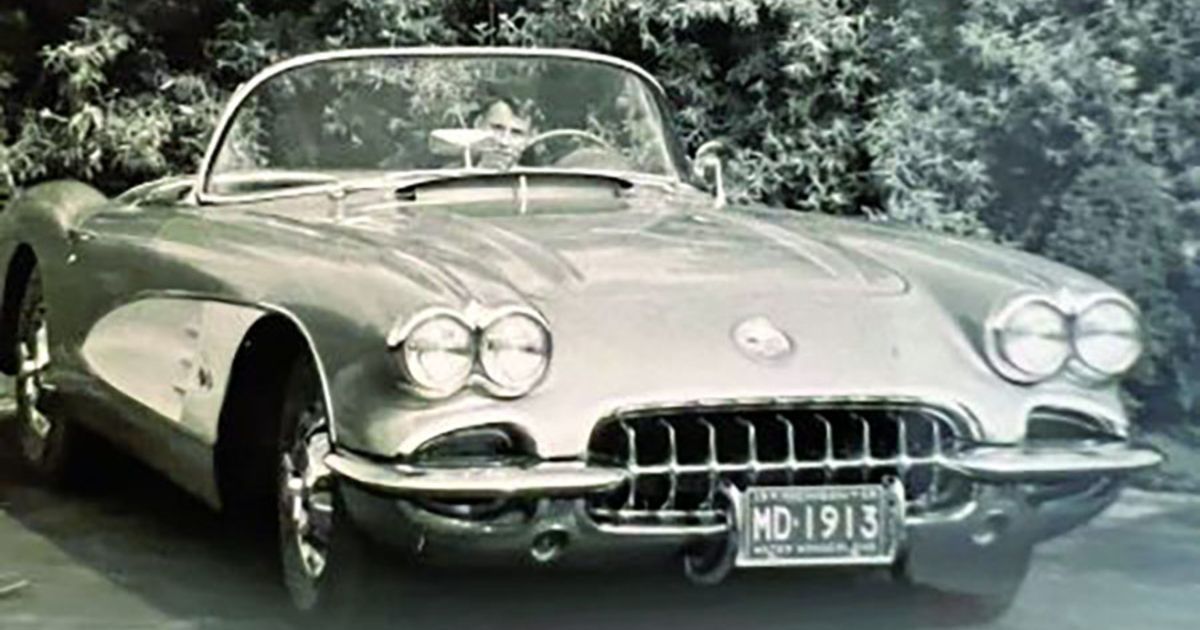
When I was in fourth grade, I had one of those school projects where you had to write a profile of a family member by interviewing another family member. I chose to ask my dad about his dad, who had died seven years before I was born.
My dad, who was an appellate attorney and talented orator, spun a tale for me about a man who was on the design team for the first Corvette, loved a stiff martini, smuggled rifles in violin cases through Canada and had 10 heart attacks, the last one getting him.
The aspiring journalist in me, even at age 10, had a healthy dose of skepticism about his story, but I ran with it for the purpose of completing my project. Four years later, my dad died, and his mom not too long after him. The window into that side of my family closed, save for a few items my brother and I moved to my mom’s basement for storage. I lost access to the memory banks that would have taught me about my paternal lineage and its role in the auto industry.
I pursued my passion for writing and editing in college and grad school, having my eyes set on a career in journalism. I took a job as an online producer at America’s oldest continuously published newspaper, the Hartford Courant. During 14 years in that newsroom, I participated in the evolution of a historic legacy print publication into a modern newsroom informing its community in new ways with innovative storytelling on digital platforms. The ability to reach people beyond our print delivery borders with information to help them navigate their daily lives opened my eyes to the exciting opportunities of a digital, connected world.
But the struggle to find a sustainable model to support our journalism was very real, and that pressure continues today.
When I became managing editor of the Chicago Tribune, I sharpened my focus on the information we collected on our readers’ consumption habits and how we could use it to make smarter decisions about our story choices, the timing of our delivery and the presentation of our work. This new understanding of our audience, paired with a rich tradition of producing high-quality journalism, increased our relevancy, improved our value proposition and accelerated the transition to a business model that relied on the support of our subscribers as much as, if not more than, our advertisers.
I just attended my first NADA Show since joining Automotive News. As I walked the exhibit floor and listened to panel discussions, I couldn’t help but notice the many parallels between the newspaper business and the auto industry. Perhaps the most significant of which is that both are experiencing tremendous disruption because of shifting consumer behavior in a rapidly changing world.
Evolution is necessary for the survival of both industries.
Automotive News will celebrate 100 years of publication in 2025. We have our eyes set on this important milestone to celebrate how we’ve helped navigate this industry from its early days to where it is today. But more importantly, to push ourselves to keep pace with the innovation and evolution happening in automotive.
As we witness this foundational shift from ICE to EV, and the ripple effect it has across the globe — from how vehicles are built, bought and driven to the impact on climate change, energy infrastructure and regulatory policy — we are committed to delivering the information you need to make informed decisions about your businesses.
We also recognize that your news consumption habits are changing. We are creating an audience-obsessed culture that will deliver relevant, insightful and differentiating journalism that is essential to anyone involved in this industry, from traditional automakers, dealers and suppliers to players yet to emerge.
When I was at the show in Las Vegas, I was often asked how I ended up at Automotive News. The details aren’t important, but you should know this: I came here because this is a great brand with a tremendously talented team. We have an important role to play in chronicling one of the most significant stories of our time, and I couldn’t pass up being a part of it.
As I prepare to move back to the Detroit area after 21 years away, I finally opened those boxes that have been collecting dust in my mom’s basement. In a manila envelope, buried at the bottom of a cedar chest, I found the original script from the Corvette product reveal with my grandfather’s initials on it. Dated Oct. 5, 1953. Turns out my dad was telling me the truth — at least the part about the Corvette.
You may email Chrissy Taylor at [email protected]